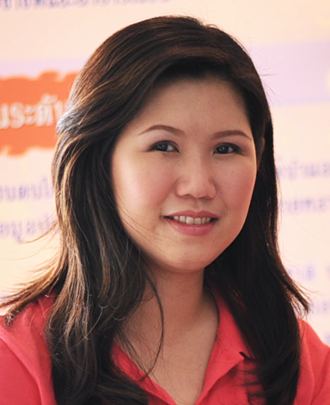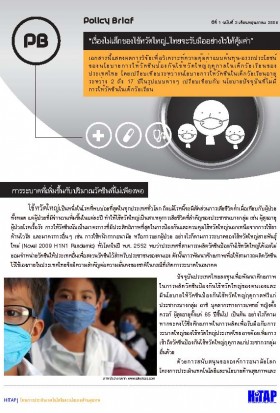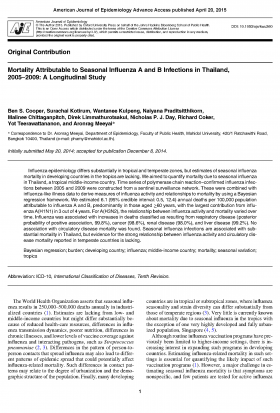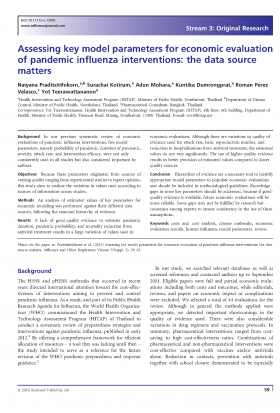This website uses cookies so that we can provide you with the best user experience possible. Cookie information is stored in your browser and performs functions such as recognising you when you return to our website and helping our team to understand which sections of the website you find most interesting and useful.
Privacy Overview







 Research report: Cost-utility analysis of seasonal influenza vaccine among school children in Thailand
Research report: Cost-utility analysis of seasonal influenza vaccine among school children in Thailand Policy : Brief ฉบับที่ 2 “เรื่องไม่เล็กของไข้หวัดใหญ่…ไทยจะรับมืออย่างไรให้คุ้มค่า”
Policy : Brief ฉบับที่ 2 “เรื่องไม่เล็กของไข้หวัดใหญ่…ไทยจะรับมืออย่างไรให้คุ้มค่า” Mortality Attributable to Seasonal Influenza A and B Infections in Thailand, 2005–2009: A Longitudinal Study (2015)
Mortality Attributable to Seasonal Influenza A and B Infections in Thailand, 2005–2009: A Longitudinal Study (2015) Assessing key model parameters for economic evaluation of pandemic influenza interventions: the data source matters. (2013)
Assessing key model parameters for economic evaluation of pandemic influenza interventions: the data source matters. (2013)
